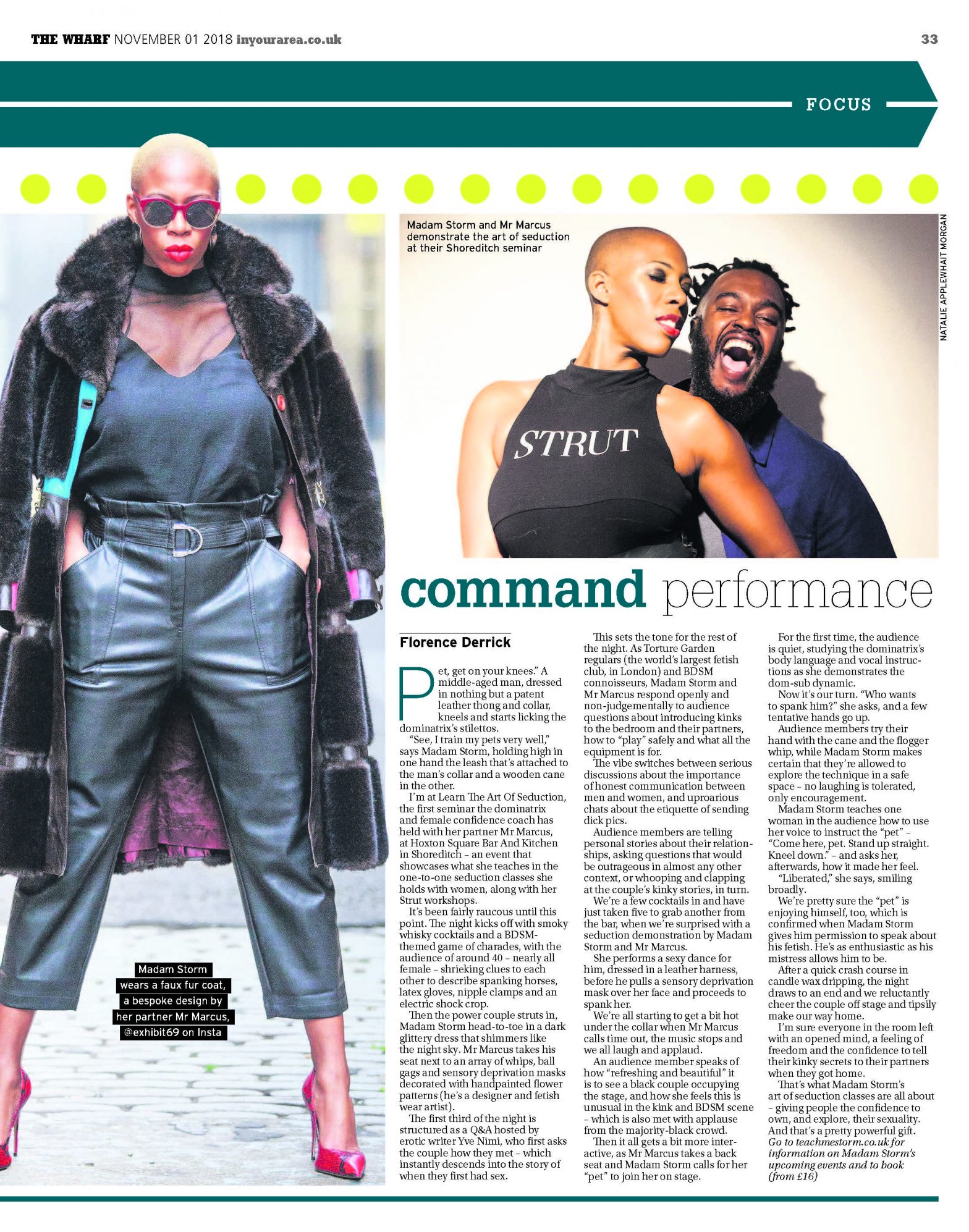It’s the epic, closing bars of Bohemian Rhapsody and the silver catsuit-clad guitarist is playing the final notes with his teeth. Packed to the rafters, the venue sways as the audience members, arm in arm, sing their hearts out in unison. The atmosphere nears euphoria, but that’s not Brian May up there, and this is certainly not Live Aid. We’re at Camden’s Electric Ballroom on a dreary December evening, witnessing a cover act that’s managed to draw the same level of crowd as the chart-topping acts that play this venue every other day of the week. Welcome to Massaoke.
The concept was launched eight years ago when five musicians – who go by Bat, Rebel Rye, Mac Savage, McClean and El Neilio – formed a singalong covers act under the name Massaoke. “We’d all been in separate indie bands that had flirted with some kind of success,” says drummer Bat. “We did the first one of these in a pub in Russell Square the day that William and Kate got married. We gave out lyric sheets and just got people together to have a singsong.”
Karaoke increasingly takes up space in leather-boothed rooms in Soho or raucous upstairs rooms in east end pubs, while interest in cover bands also seems to be growing in London. Ten-piece brass band Old Dirty Brasstards regularly treats Londoners to renditions of classic Arctic Monkeys or Oasis albums, while the hugely popular Re:Imagine series brings orchestral versions of seminal albums to the Jazz Café and XOYO: think Dr Dre’s 2001, The Miseducation of Lauryn Hill or Frank Ocean’s Channel Orange. Inspired by Swedish singalong TV show Allsang, Massaoke sits somewhere between the two.
Perhaps it’s no surprise that music fans are turning to smaller versions of big-name shows when standing tickets at the O2 Arena often cost upwards of £60; the Massaoke boys tear it up for a smidgeon of the entry fee, and you’ll still get to hear all your favourite songs. You also get to join in: each song is accompanied by lyrics projected on big screens around the room, karaoke-style.
Tonight, it’s a Christmas-themed show, and it’s sometimes hard to see the stage through all the bobbing Santa hats and reindeer antlers. The energetic band blasts through a medley of Christmas favourites – by Slade, Wham! and Wizzard – before bringing out a guest female soloist to belt out a Mariah Carey tribute. We stomp our way through The Proclaimers and growl out The Pogues, before Bat swaps his drum kit for a handheld snare and plays to a downbeat cover of Little Drummer Boy. Not one person in the room isn’t singing, whether they’re in couples, groups of friends or raucous work outings. It’s rare to see a club venue like Electric Ballroom filled with such an age-diverse range of people, and the unlikely coming together of so many different groups makes the room glow with Christmas spirit.
Massaoke might be a fairly new concept, but congregating to sing together is a natural form of human expression. “Throughout history people have always passed along and borrowed songs,” Bat says. “With Motown they all swapped songs and before that you had songs called standards that everyone knew. This is a returning to something that’s always happened. Getting together in social spaces and having a sing-song is entrenched in every country in the world.”
And despite its name, Massaoke is also popular with people who aren’t into singing karaoke. “Karaoke can be negative because people can find the spotlight difficult,” says Bat. “There’s no spotlight here and people who feel like they can’t sing get the opportunity to do it. There’s no one hogging the mic and it’s about all being together. And when people all sing along it sounds really good.”
The musicians behind Massaoke have just announced that they’ll be holding a singalong residency at Electric Ballroom from March 2020. They’ve also started holding matinees, bringing the phenomenon to an even wider range of ages, and regularly tour in Australia, the US and Europe. It’s plain to see that a mass singalong is, just as Bat says, common to all creeds.
But what does the band do if someone’s too cool to sing along? “We always break them by the end of the night,” Bat laughs. “There’s always a fella who’s been brought along by his partner and he’s stood there crossed arms. But by the end he’s usually the one that’s got his shirt off and waving it around his head from someone’s shoulders.”
Thankfully, no one’s too cool for the festive edition. We leave feeling like we’ve been at the world’s most raucous festive work do. The world seems a little rosier and a bit less disconnected. And that’s a feeling that shouldn’t just be for Christmas.
massaoke.com



